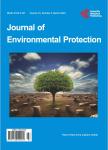Ionic Liquid Assisted Extraction of Nitrogen and Sulphur-Containing Air Pollutants from Model Oil and Regeneration of the Spent Ionic Liquid
氮,硫含空气污染物从模型石油和再生的废离子液体的离子液体辅助萃取作者机构:Industrial Chemistry and Reaction EngineeringProcess Chemistry CentreAbo Akademi UniversityTurkuFinland Technical ChemistryDepartment of ChemistryChemical-Biological CenterUmea UniversityUmeaSweden
出 版 物:《Journal of Environmental Protection》 (环境保护(英文))
年 卷 期:2011年第2卷第6期
页 面:796-802页
基 金:financial support from Neste Oil Oyj
主 题:Ionic Liquids Extraction Air Pollutants Nitrogen Compound Sulfur Compounds
摘 要:Removal of air pollutants, such as nitrogen and sulphur containing compounds from a model oil (dodecane) was studied. An ionic liquid (1-ethyl-3-methylimidazolium chloride [C2mim] [Cl]) was used as an extractant. Liquid-liquid extraction by using 1-ethyl-3-methylimidazolium chloride [C2mim] [Cl] was found to be a very promising method for the removal of N- and S-compounds. This was evaluated by using a model oil (dodecane) with indole as a neutral nitrogen compound and pyridine as a basic nitrogen compound. Dibenzothiophene (DBT) was used as a sulphur compound. An extraction capacity of up to 90 wt% was achieved for the model oil containing pyridine, while only 76 wt% of indole in the oil was extracted. The extraction capacity of a model sulphur compound DBT was found to be up to 99 wt%. Regeneration of the spent ionic liquid was carried out with toluene back-extraction. A 1:1 toluene-to-IL wt ratio was performed at room temperature. It was observed that, for the spent ionic liquid containing DBT as a model compound more than 85 wt% (corresponding 3852 mg/kg) could be removed from the oil. After the second regeneration cycle, 86 wt% of the DBT was recovered from the ionic liquid to toluene. In the case of indole as the nitrogen containing species, more than 99 wt%, (corresponding to 2993 mg/kg) of the original indole was transferred from the model oil to the ionic liquid. After the first-regeneration cycle of the spent ionic liquid, 54 wt% of the indole–in-IL was transferred to toluene. Thus, both extractions of nitrogen and sulphur model compounds were successfully carried out from model oil and the back-extraction of these compounds from the ionic liquids to toluene demonstrated the proved the concept of the regeneration point of view.



